Todd Brugman finishes smoking his tobacco pipe and begins to carefully layer golden-orange oil paint onto a strip of birch panel. The light sketches of geometric figures in front of him wait patiently to be filled by layer after semi-transparent layer of color, transforming what was once stagnant and inarticulate into a breathing expression of the feelings and experiences Brugman calls “ineffable”.
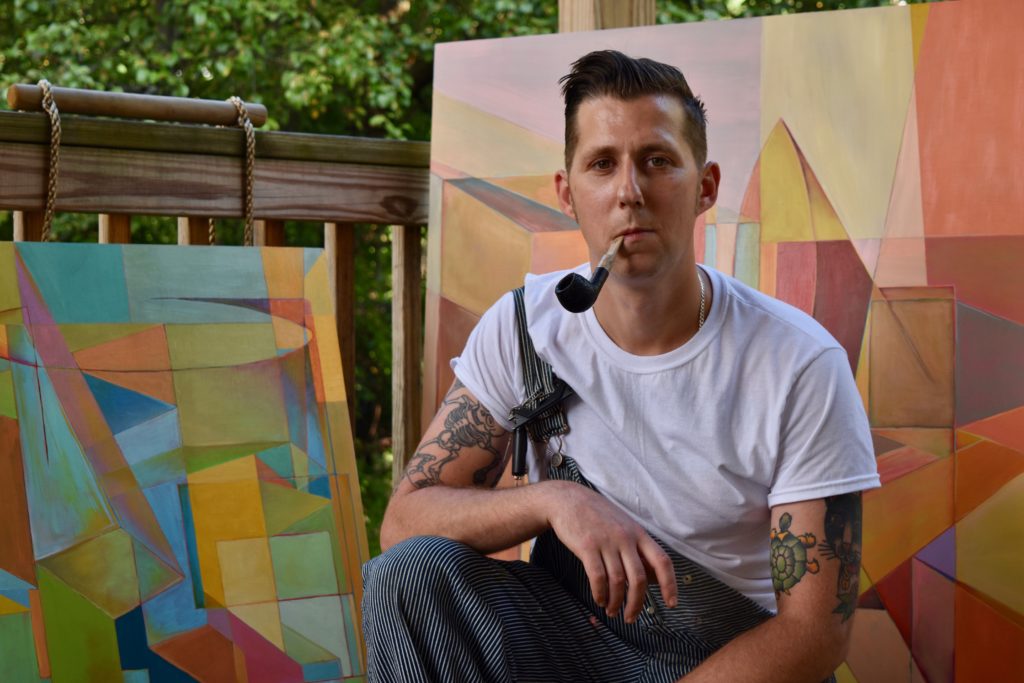
Todd Brugman on the porch of his Somerville home, in front of his paintings. Photo by Caroline Boschetto (October 9, 2018)
The 35-year-old abstract artist is wearing pinstripe overalls and a white t-shirt that exposes his arm and knuckle tattoos, including a turtle representing his mom and a cat symbolizing his wife. In his home studio in Somerville, his paintings flank the tight space and spill out onto the walls of the other rooms of his house. His earlier black and white, biomorphic prints give way to geometric paintings with layers and depths of bright colors. Brugman describes each successive piece that surrounds him as a reaction to the prior. “It is analogous to me reacting to myself the day before…to continue to be a better person going forward.”
Although his studio appears a bit haphazard, Brugman is meticulous about certain details of his work environment. He insists on the walls being white in order to mix colors without bias, although says he now is considering grey as a more neutral alternative. He does not listen to music or talk radio as he paints for risk of having other artists’ works influence his own, but he doesn’t mind talking, and he never seems to run short of stories and theories to share.
He explains how geometry, space, and time inform his work. He talks about anti-capitalist politics and theories about how governments could sponsor artists. He also speaks at length about his past traumas, drug addiction, and incarceration, which have all been subjects in many of his works. “Who I am as an artist definitely draws from that… Good art, in my opinion, is autobiographical. It’s visceral,” he states. Painting has proven integral to Brugman’s healing process, although he says this is not the main reason he creates.
Brugman works independently as a full-time artist, and his geometric paintings have shown and sold in galleries and arts events throughout Boston and across Massachusetts, including the Boston Arts Festival, Jamaica Plain’s “First Thursdays,” and Somerville Open Studios.
For University of Massachusetts Associate Professor of Art Elizabeth Marran, Brugman’s mentor and former painting and printmaking professor, his work evokes a suspension in time. “You think if you blink it could look a little different than when you next take a look at it,” she describes. “It suggests transition. Also how he plays with depth and surface, how he juxtaposes the two-dimensional plane to the sense of depth in his newer work, the kind of prismatic articulation of form… it’s this sort of pulsating picture that I find very interesting.”
Brugman’s interest in visual arts was piqued at a young age, and his parents and educators recognized his talent. He grew up in Lynnfield, Massachusetts, in what he describes as a loving, two-parent, middle-class home. In high school, he won top prizes at state and national arts competitions. Despite the love and creativity that filled his early years, Brugman also suffered traumas of sexual assault and anti-Semitism during this period that left lasting impacts.“I got swastikas keyed into my car,” he said. “There was no other minority to hate on so I was the minority.” When he was introduced to heroin by a skateboarding friend when he was about 13 years old, Brugman had never tried other drugs or alcohol before. This high gave him an emotional release after years of repressing his traumas, and he began to use drugs to mask his pain.
He started using heroin regularly at the age of 17, but recalls that he remained relatively functional and active as an artist, student, sponsored skateboarder, and punk rock musician. Brugman was accepted into fine arts schools and enrolled at Northeastern University to study graphic design, but discontinued after less than a semester due to his increasing drug use. “It was very cyclical,” Brugman explains. “Because I was using, I was hooked into situations where more trauma happened and I needed to cover that up more and more, and push things back more and more.”
Brugman continued to take arts classes at different Boston-area universities, but he descended deeper into addiction and underwent chemotherapy after contracting Hepatitis C from sharing needles. Followng a period of homelessness, he was ultimately incarcerated at the age of 23 after accumulating enough charges and suspended sentences for drug possession. Brugman served just over a year in prison.
While incarcerated, Brugman continued to pursue higher education and began reading Eastern spiritual texts that influence his beliefs to this day. He also innovated means of continuing his art, such as extracting pigments from M&Ms to create watercolor-type works.
Despite attempts to stay creative and productive, Brugman struggled through his sentence. He recalls a period of 20 days that he spent naked in solitary confinement that inspired many of his paintings. “I definitely was tortured and that created a whole other layer of trauma for me,” he said. “It was cold. And it was right when I got incarcerated and I was going through withdrawals.”
Brugman’s friend and mentor Elizabeth Stein, a poet whom he met through dog walking, believes the emotional lens of such experiences has impacted Brugman’s work. “He knows what it’s like to be treated in a form that’s less than human, so I think there’s a humanity in his abstract art,” she said.
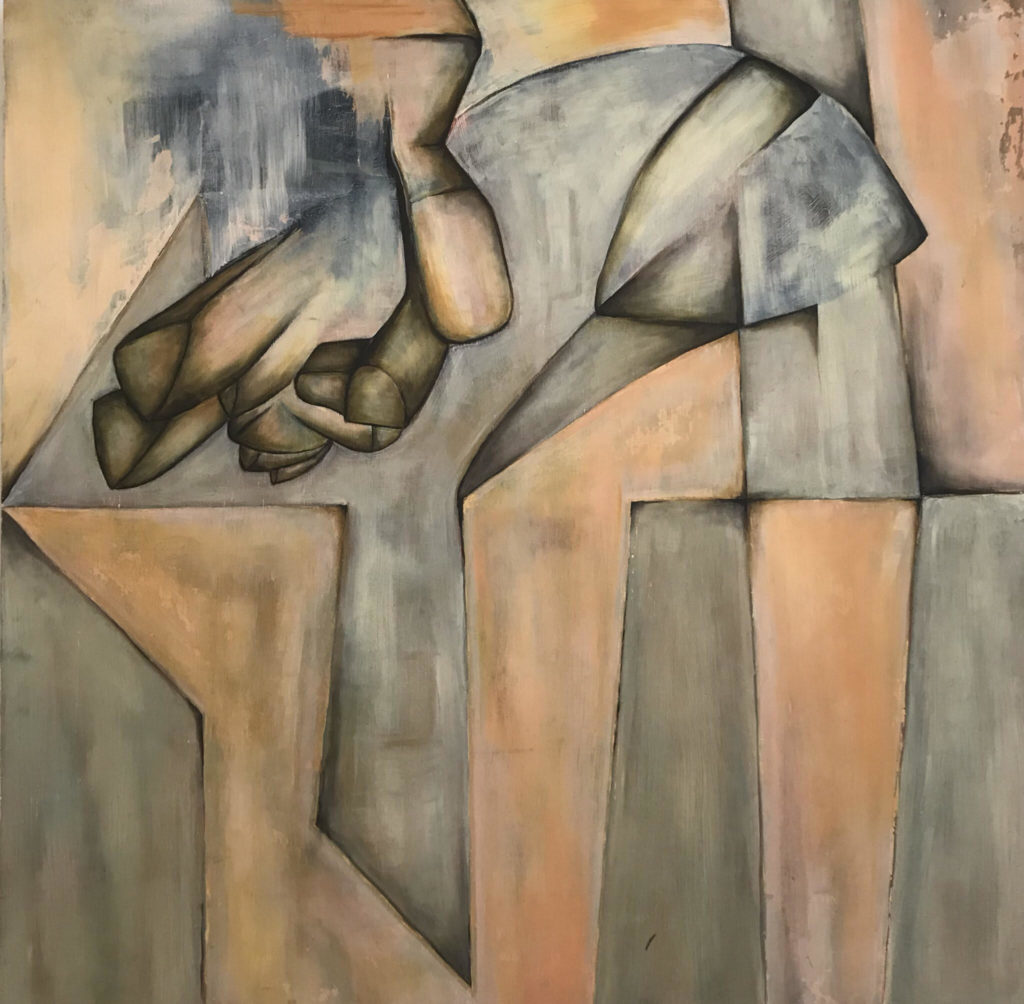
Alluring fascination within Impenetrable Enclosures, Todd Brugman (2017). Oil on Birch Panel 40” X 40.” Photo courtesy of the artist.
Brugman believes that, while pharmaceutical companies' marketing of opioids has contributed to the problem of widespread addiction, the impact of personal traumas and a lack of treatment for those traumas lie at the root of the opioid crisis in society. “The demand is still there, so treatment [of traumas]is the cure [to the addiction crisis],” he says. “They're going after the wrong thing.”
Brugman has now been abstinent from heroin for approximately 10 years, but explains that this shift was a slow and difficult one. “How I got off it is really by continuing to try and become a more compassionate human being, caring about all sentient beings. If I cared about all sentient beings, that included myself. I’ve done a lot of wreckage in my life, and when I started to become more compassionate I just didn’t want to do any more harm in this world.”
Through painting, Brugman both shares his emotions and lived experiences with the world and finds an alternative to drugs for coping with traumatic memories. “I put it on the canvas and work it out as though it were a mathematical equation,” he describes. “The more I’ve solved it... the more beautiful the image gets.”
Mathematics play a critical role for Brugman in articulating messages through his geometric works. He states that because the elements of his geometric works can be broken down endlessly into smaller units — from shapes, to shapes within shapes, down to micro brush strokes — he considers the space within his paintings to be infinite. Therefore, Brugman believes that his works can also be read and processed in an infinite number of ways, creating an endless variety of viewer experiences.
“Mathematics is often said to be the universal language,” Brugman said. “[Viewers are] not going to know that single day of mine [that I represented on the canvas], but if I do the work correctly, they will have the same feeling I had that day in relation to themselves and their lives.”
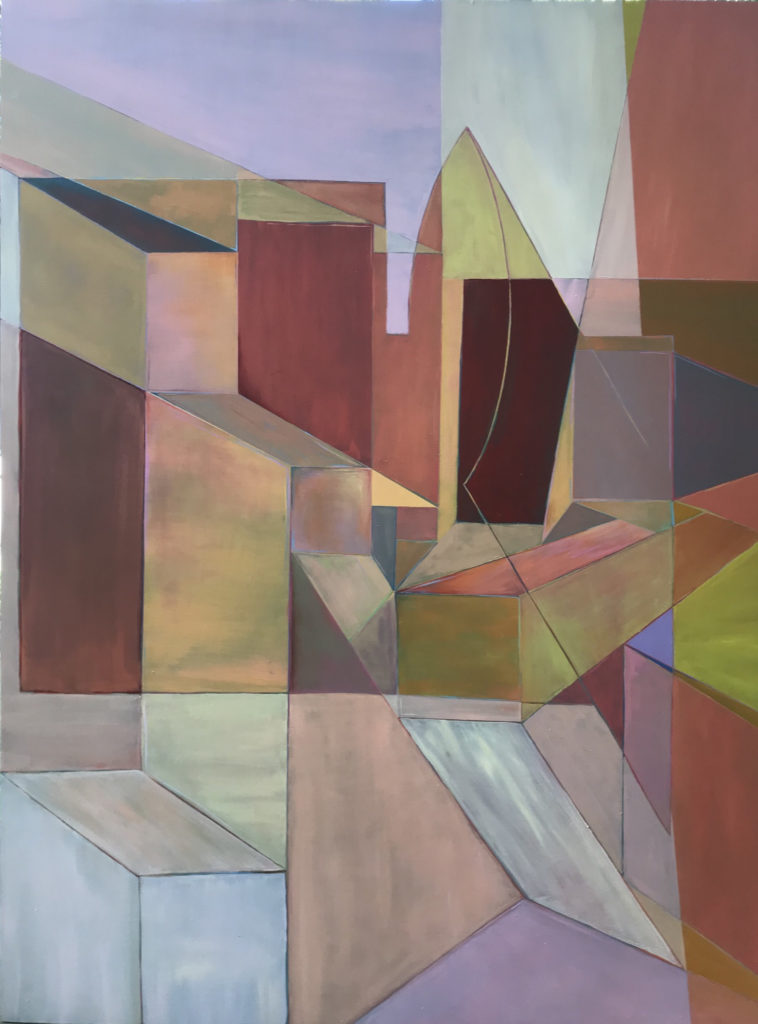
Fluidity of Direction at Conception, Todd Brugman (2018),
Oil on Birch Panel 36” X 48." Photo courtesy of the artist.
Brugman uses color variations and combinations to convey emotion in his paintings. His visual perception of color and his experience of emotions are so closely interconnected that he considers himself to have a form of synesthesia, which is the perceptual phenomenon of senses blending together.
Currently, Brugman is preparing for an upcoming move to a new shared studio in Newton, but he expects to always remain self-employed. This is partially because his criminal record makes finding employment a challenge, and because remaining professionally independent has allowed him to speak openly about his past. “I’ve chosen not to hide my past because I’m not ashamed of it, it’s who I am. I know who I am today and I know anyone who meets me will understand who I am, and that I’m not a bad human being.”
As he lounges on his porch and stares out at his grassy yard, Brugman expresses contentment and gratitude for the happy, middle-class life that he shares with his wife and dog. He hopes for “more of the same” in his future. As an artist, he aspires to become more prolific and self-sustaining, and is preparing for two solo shows in 2019 at Evie Salon Studio in Somerville, and at the Piano Craft Gallery in Boston.
“I am becoming a more enlightened human being every day I paint,” he said. “I’ll never be perfect but I strive to be better and I know that I’m better than I was… a better human in this world.”



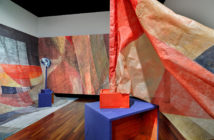
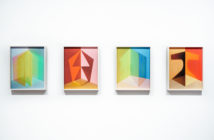
2 Comments
Brilliant! I’ve seen his work before years ago, after seeing it only once the images have never left my mind.
Reading this I felt like I was in his studio watching him work. Such a vivid article.
I love his new work I see here (and what I just looked up). I remember reading about his work at a show and it being so intriguing. Reading about Todd is just as intriguing and makes me that much more excited to see more of his work. What an interesting & brave artist!
I appreciate your kind words. You’re comment is very flattering and humbling.
I can always be reached at todd.brugman@gmail.com I’d love to hear from you and anyone else who’d like to reach out.
Thank You,
Todd